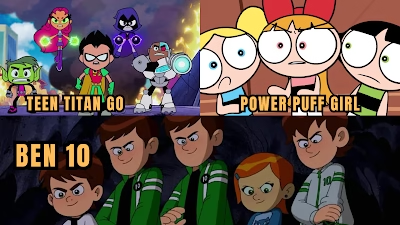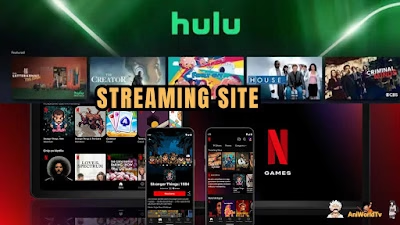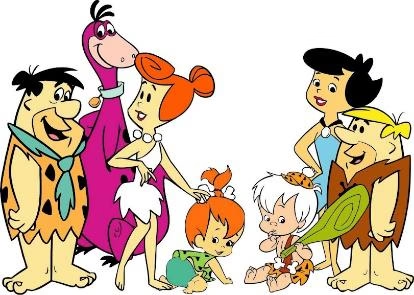Once a leading force in children’s television and home to iconic animated series, Cartoon Network has experienced a significant shift in recent years. Cartoon Network, which captured the hearts of millions, is now navigating a changing media landscape. In this article, we will explore the factors involved in the evolution of Cartoon Network, including corporate decisions, changing viewer habits, the rise of streaming sites and the internet, and the network’s content strategy.
We will also touch upon questions like when Cartoon Network Studios’ physical building transitioned operations, the current status of the Cartoon Network channel, and why these changes are happening. So let’s start.
The First Cartoon Channel: A Legacy Worth Remembering
The Origins Of Cartoon Network
Cartoon Network was first introduced in the 1990s by Ted Turner. In the early 1990s, Ted Turner owned a company called TBS (Turner Broadcasting System), which acquired the copyrights to a vast library of animated content
Through this media content copyright acquisition, they brought rights from some of the most famous production houses, including MGM (Metro-Goldwyn-Mayer) , Hanna-Barbera ,Warner Bros. Animation, Animation, Ruby-Spears Productions, Fleischer Studios, and more. All these production houses and their cartoons laid the foundation for what would become a cultural phenomenon.
The Birth Of Cartoon Network
On October 1, 1992, Cartoon Network officially came into existence. Cartoon Network quickly gained popularity, appealing to audiences of all ages with its diverse range of animated shows, initially relying heavily on its extensive archive of classic cartoons.
Whether it was classic cartoons or new, innovative series, Cartoon Network had something for everyone. In 1996, The Cartoon Network entered a new era with the launch of the “What A Cartoon!” series, which introduced original content that would shape the future of animation by showcasing pilot episodes for potential new series.
The Shift In Programming
The Introduction Of Non-cartoon Content

In 2009, Cartoon Network began to deviate from its original mission of providing purely animated content. Shows like “Destroy Build Destroy” and “Dude, What Would Happen?” were introduced, both of which had little to do with cartoons.
These live-action shows didn’t resonate with the network’s core audience, and by 2011, both were canceled due to poor reception. The network’s decision to venture into non-cartoon content marked the beginning of its identity crisis for some viewers.
The Launch Of Toonami And Its Impact
In the late 1990s, Cartoon Network launched a programming block called Toonami, which exclusively aired anime like Dragon Ball Z, Sailor Moon, and Gundam Wing. This block was highly influential in introducing many Western viewers to anime. While it initially introduced viewers to popular anime series, Toonami did face periods of discontinuation before making a successful comeback in later years, demonstrating the audience’s appetite for this type of content.
The initial struggles of Toonami highlighted the challenges Cartoon Network faced in consistently satisfying its diverse audience.
The Evolution of Cartoon Network
The Reboots Of Classic Shows

In an attempt to recapture its former glory and appeal to new audiences, Cartoon Network decided to reboot several classic shows, including “The Powerpuff Girls”, “Ben 10”, and “Teen Titans”. However, these reboots often faced a mixed reception from fans of the original series, with some criticizing them for lacking the originality and quality of their predecessors.
This decision sometimes alienated long-time viewers who had grown up with the original versions of these shows, leading to discussions about preserving the legacy of beloved series.
The Impact Of Streaming Services And Changing Viewing Habits

One of the significant factors influencing Cartoon Network’s trajectory has been the rise of streaming services like Netflix, Hulu, and Disney+. With the advent of high-speed internet, viewers no longer had to wait for their favorite shows to air on TV.
Instead, they could watch anything they wanted, on demand, on streaming platforms. This shift in viewing habits led to a significant decline in traditional TV viewership, further impacting Cartoon Network’s ratings and revenue.
Changes in the Quality and Focus of Cartoons
As the network navigated increased competition, there were observations about a shift in the style and content of the cartoons being produced. The creativity and originality that once defined Cartoon Network, with shows like “Dexter’s Laboratory”, “Courage the Cowardly Dog”, “Ed, Edd n Eddy”, and “Samurai Jack”, began to evolve. The network explored different types of animation and storytelling, which resonated with some audiences while not as much with others.
This evolution in content contributed to ongoing discussions among viewers about the network’s direction.
The Current Landscape of Cartoon Network

The Network’s Adaptation and Warner Bros. Discovery’s Strategy
The changes at Cartoon Network are also linked to broader corporate strategies. In recent times, Warner Bros. Discovery, the parent company, has been focusing on consolidating its content and streamlining operations, with a greater emphasis on its streaming platform, Max.
The Transition of Cartoon Network Studios
Regarding Cartoon Network Studios, the physical building in Burbank transitioned its operations, with the teams moving to Warner Bros. Animation. This move aimed to integrate the animation divisions.
The Status of the Cartoon Network Channel
It’s important to clarify that the Cartoon Network channel itself has not shut down. While its website was indeed closed, and there have been changes in its studio structure, the channel continues to broadcast. However, its programming and focus have evolved over time.

Why These Changes Matter
Cartoon Network holds a significant place in the history of animation and the childhoods of many. Its original run of programming is fondly remembered for its creativity, humor, and ability to appeal to a wide audience. Shows like “The Powerpuff Girls”, “Adventure Time”, “Regular Show”, “Steven Universe”, and “The Amazing World of Gumball” became cultural touchstones.
The changes, including the shift towards streaming and a different content mix, signify a move away from the Cartoon Network that many grew up with. For those who cherished the unique identity and groundbreaking animation of its earlier years, these changes can feel like the end of an era. The closure of the website, in particular, was seen by many fans as a symbolic moment.
Famous Cartoon Network Shows:
- Dexter’s Laboratory
- The Powerpuff Girls (original)
- Johnny Bravo
- Ed, Edd n Eddy
- Courage the Cowardly Dog
- Samurai Jack
- The Grim Adventures of Billy & Mandy
- Foster’s Home for Imaginary Friends
- Ben 10 (original)
- Adventure Time
- Regular Show
- Steven Universe
- The Amazing World of Gumball
Conclusion
Cartoon Network’s journey reflects the dynamic nature of the television industry in the digital age. Factors such as corporate decisions, the rise of streaming services, evolving viewer preferences, and shifts in content strategy have all played a role in its current state.
While the Cartoon Network channel continues to exist, the changes signify a departure from its earlier identity, which resonated deeply with many viewers. The legacy of Cartoon Network as the first 24-hour animation channel and the home of countless iconic shows will undoubtedly be remembered by those who grew up with it, even as its future unfolds in a new media landscape.
Q1. When Did Cartoon Network Studios Shut Down?
A1. The physical building of Cartoon Network Studio in Burbank transitioned its operations starting around August 1, 2024, with operations being integrated with Warner Bros. Animation, which moved to a new Warner Bros. facility. The creative work continues under Warner Bros. Animation.
Q2. Cartoon Network Shutdown Or Not?
A2. The Cartoon Network channel is still broadcasting. However, Warner Bros. Discovery did shut down the official Cartoon Network website.
These are some questions if you answer them in the comments, it will help us to write more articles about this type of content.
- What was your favorite Cartoon Network show growing up, and how do you feel about its reboot or continuation?
- Do you believe Cartoon Network could have done anything differently to navigate the changes in the media landscape? If so, what?
- What are your thoughts on the current animation being produced compared to Cartoon Network’s “golden era”?
- Did you enjoy the Toonami block and its introduction to anime? Which Toonami show was your favorite?
- Do you still watch the Cartoon Network channel? If so, what do you think of its current programming?
.png)



